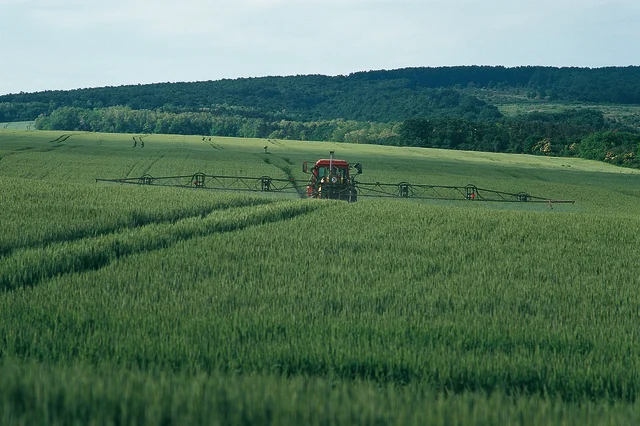Published on 10th July 2020
Weed Management
Effective use of glyphosate for black-grass control

How to get the best results from using glyphosate for black-grass control and manage resistance risks.
Glyphosate is a non-selective, foliar acting post-emergence herbicide that plays a vital role in many black-grass control programmes.
Well-targeted applications before drilling can significantly reduce the overall weed burden and alleviate pressure on in-crop pre- and post-emergence chemistry.
Below are 10 tips to get best results from pre-drilling glyphosate on stale seedbeds:
1. Move as little soil as possible to keep black-grass seed within the top 5cm germination zone
2. Manage surface trash to ensure it does not prevent good consolidation of stale seedbeds
3. Consolidate stale seedbeds soon after any cultivation to conserve moisture and improve seed-to-soil contact, encouraging black-grass germination
4. Be patient. Black-grass germination varies according to temperature, moisture and seasonal seed dormancy, so spraying too early risks missing later emerging weeds
5. Annual grassweeds should have at least 5cm of leaf and be actively growing when treated
6. Avoid spraying in very hot, dry conditions
7. Do not allow weeds to become too large before spraying
8.Consider a repeat cultivation and consolidation (if required) to encourage a further weed flush before drilling within five days of the final stale seedbed cycle
9. Consider including a permitted glyphosate application with the pre-em if weeds have emerged - check product compatibility and ensure it is applied true pre-emergence with no risk to emerging crops
10. Follow label instructions and resistance management guidelines (see below).
Manage resistance risks
Repeated use and over-reliance on glyphosate must be avoided to minimise the risk of resistant weed populations developing.
The Weed Resistance Action Group (WRAG) has produced guidelines for minimising the risks.
Below are three key areas to focus on when using glyphosate for black-grass control, either before a crop is sown, or to spray off patches within crops.
1. Dose
Tailor dose rate according to the type and size of weed.
Reducing rates or applying insufficient active for the size of weed risks lower control and increases the risk of resistance development.
Annual grasses typically require 540 g.a.i./ha for seedlings up to 6 tillers, and 1,080 g.a.i./ha when flowering, but always follow manufacturer recommendations.
When using adjuvants, only reduce the glyphosate rate if the label specifically recommends doing so. Also use the correct water volume, nozzle choice and sprayer set-up for the product being applied.
2. Growth stage
Smaller black-grass is generally easier to control, providing plants are large enough to take up sufficient active.
Ideally, spray when plants are at least 5 cm tall, but before the start of rapid stem extension (typically occurs during April and May).
Once into stem extension herbicide translocation down to roots can be seriously restricted, increasing the risk of re-growth which would require further treatment and increase the risk of resistance developing.
Instead, wait to apply a single spray from full ear emergence in early June until just before seeds are fully ripe. This will prevent either re-growth or viable seed production.
Ensure there is no shading of black-grass by other plants that may prevent glyphosate hitting the target leaf.
3. Conditions
Apply to actively growing plants in warm conditions (15–25°C is optimal). Avoid periods of prolonged frost.
Glyphosate can be sprayed onto damp leaves, but allow at least 6 hours before any rainfall, as heavy rain before plant uptake reduces efficacy.
Avoid evening spraying as drying is likely to take longer and there is a higher risk of runoff from night rainfall.
Other points to note:
Avoid multiple stubble or stale seedbed applications without cultivation between them
Do not repeat applications of glyphosate to the same surviving weeds as this could increase the risk of selecting for herbicide-resistant populations
Report suspected survivors of glyphosate treatment to your agronomist or product manufacturer and consider getting seed samples tested for resistance
Integrate glyphosate with effective cultivations, other cultural controls and pre-/ post-emergence herbicides.
Full resistance management guidelines are available here.



